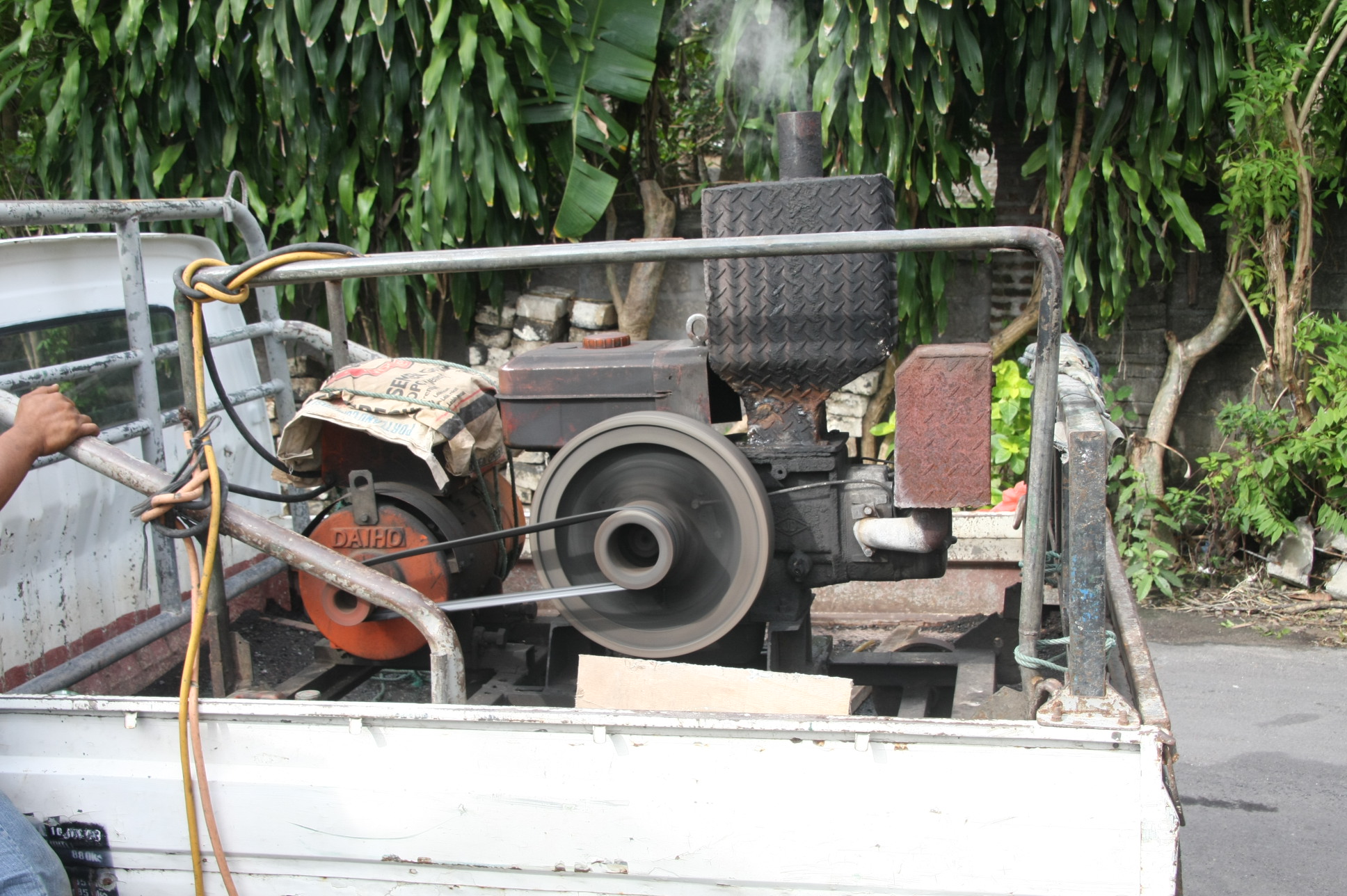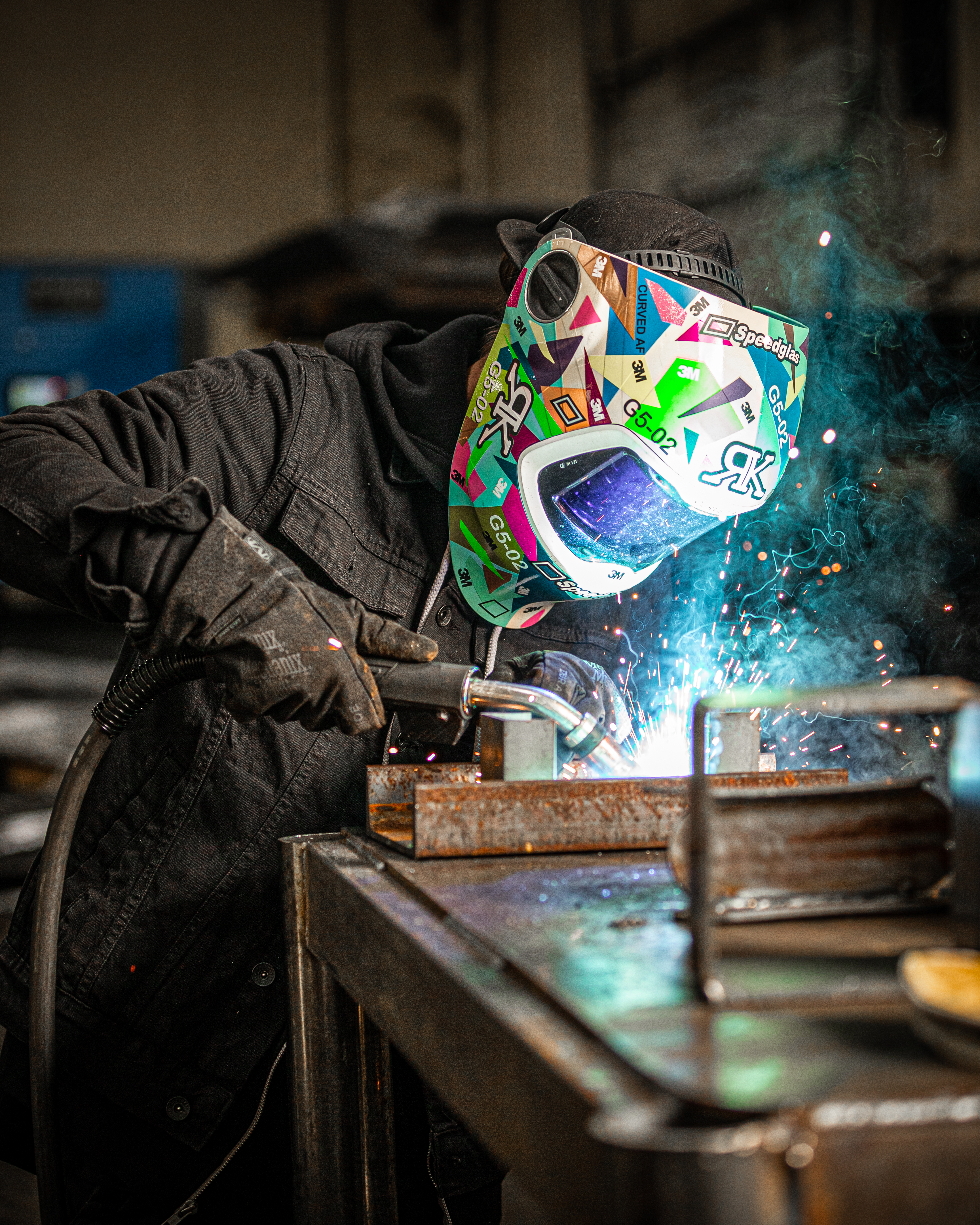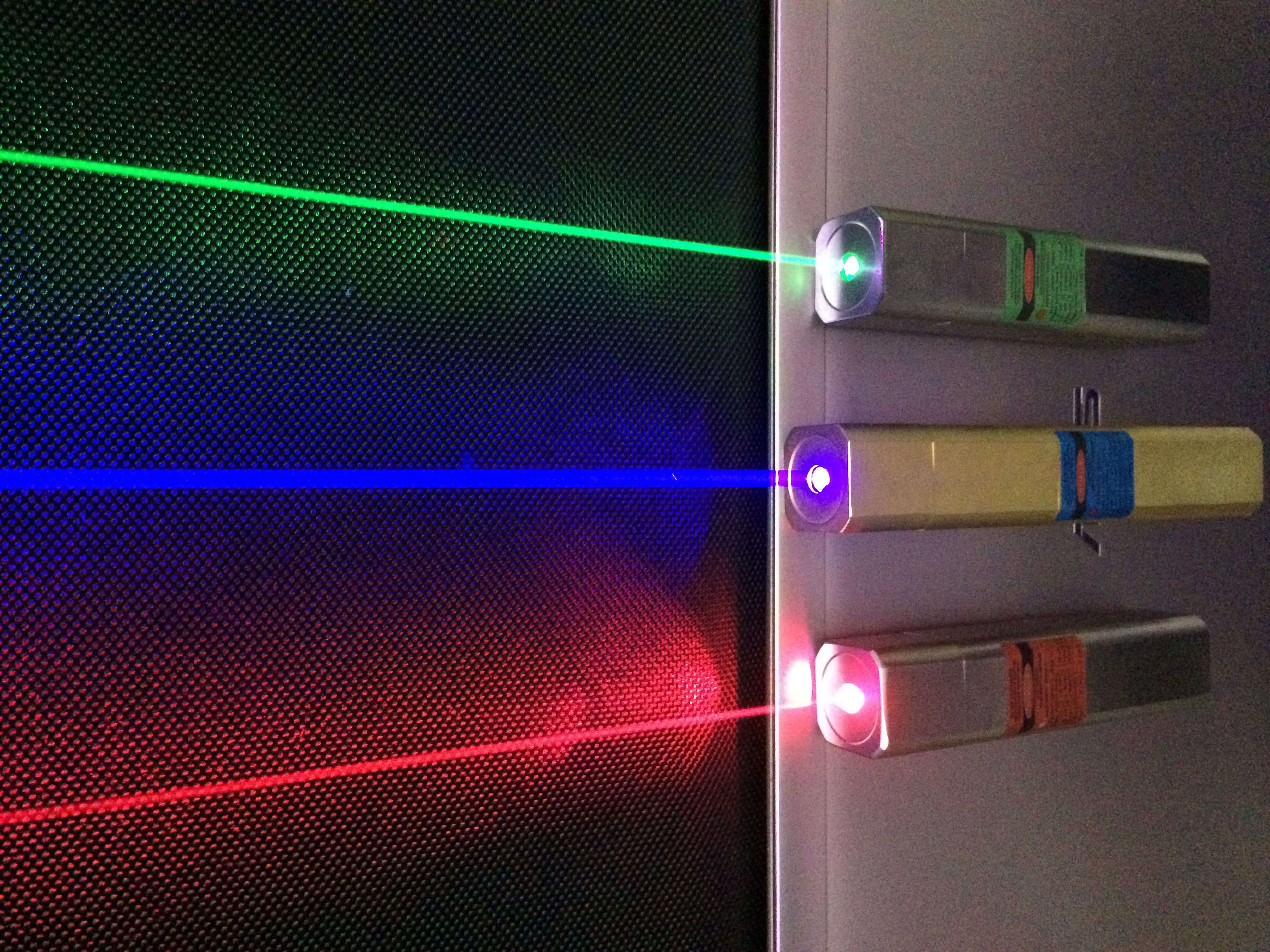|
Laser-hybrid Welding
Laser-hybrid welding is a type of welding process that combines the principles of laser beam welding and arc welding. The combination of laser light and an electrical arc into an amalgamated welding process has existed since the 1970s, but has only recently been used in industrial applications. There are three main types of hybrid welding process, depending on the arc used: TIG, plasma arc or MIG augmented laser welding. While TIG-augmented laser welding was the first to be researched, MIG is the first to go into industry and is commonly known as hybrid laser welding. Whereas in the early days laser sources still had to prove their suitability for industrial use, today they are standard equipment in many manufacturing enterprises. The combination of laser welding with another weld process is called a "hybrid welding process". This means that a laser beam and an electrical arc act simultaneously in one welding zone, influencing and supporting each other. Laser Laser welding not ... [...More Info...] [...Related Items...] OR: [Wikipedia] [Google] [Baidu] |
Laser Beam Welding
Laser beam welding (LBW) is a welding technique used to join pieces of metal or thermoplastics through the use of a laser. The beam provides a concentrated heat source, allowing for narrow, deep welds and high welding rates. The process is frequently used in high volume and precision requiring applications using automation, as in the automotive and aeronautics industries. It is based on keyhole or penetration mode welding. Operation Like electron-beam welding (EBW), laser beam welding has high power density (on the order of 1 MW/cm2) resulting in small heat-affected zones and high heating and cooling rates. The spot size of the laser can vary between 0.2 mm and 13 mm, though only smaller sizes are used for welding. The depth of penetration is proportional to the amount of power supplied, but is also dependent on the location of the focal point: penetration is maximized when the focal point is slightly below the surface of the workpiece A continuous or pulsed laser ... [...More Info...] [...Related Items...] OR: [Wikipedia] [Google] [Baidu] |
Arc Welding
Arc welding is a welding process that is used to join metal to metal by using electricity to create enough heat to melt metal, and the melted metals, when cool, result in a binding of the metals. It is a type of welding that uses a welding power supply to create an electric arc between a metal stick ("electrode") and the base material to melt the metals at the point of contact. Arc welders can use either direct (DC) or alternating (AC) current, and consumable or non-consumable electrodes. The welding area is usually protected by some type of shielding gas (e.g. an inert gas), vapor, or slag. Arc welding processes may be manual, semi-automatic, or fully automated. First developed in the late part of the 19th century, arc welding became commercially important in shipbuilding during the Second World War. Today it remains an important process for the fabrication of steel structures and vehicles. Power supplies To supply the electrical energy necessary for arc welding processes ... [...More Info...] [...Related Items...] OR: [Wikipedia] [Google] [Baidu] |
Gas Tungsten Arc Welding
Gas tungsten arc welding (GTAW), also known as tungsten inert gas (TIG) welding, is an arc welding process that uses a non-consumable tungsten electrode to produce the weld. The weld area and electrode are protected from oxidation or other atmospheric contamination by an inert shielding gas (argon or helium). A filler metal is normally used, though some welds, known as ''autogenous welds'', or ''fusion welds'' do not require it. When helium is used, this is known as heliarc welding. A constant-current welding power supply produces electrical energy, which is conducted across the arc through a column of highly ionized gas and metal vapors known as a plasma. GTAW is most commonly used to weld thin sections of stainless steel and non-ferrous metals such as aluminum, magnesium, and copper alloys. The process grants the operator greater control over the weld than competing processes such as shielded metal arc welding and gas metal arc welding, allowing for stronger, higher qualit ... [...More Info...] [...Related Items...] OR: [Wikipedia] [Google] [Baidu] |
Plasma Arc
A plasma torch (also known as a plasma arc, plasma gun, plasma cutter, or plasmatron) is a device for generating a directed flow of plasma. The plasma jet can be used for applications including plasma cutting, plasma arc welding, plasma spraying, and plasma gasification for waste disposal. Types Thermal plasmas are generated in plasma torches by direct current (DC), alternating current (AC), radio-frequency (RF) and other discharges. DC torches are the most commonly used and researched, because when compared to AC: "there is less flicker generation and noise, a more stable operation, better control, a minimum of two electrodes, lower electrode consumption, slightly lower refractory eatwear and lower power consumption". Transferred vs. non-transferred There are two types of DC torches: non-transferred and transferred. In non-transferred DC torches, the electrodes are inside the body/housing of the torch itself (creating the arc there). Whereas in a transferred torch one elect ... [...More Info...] [...Related Items...] OR: [Wikipedia] [Google] [Baidu] |
Metal Inert Gas Welding
Gas metal arc welding (GMAW), sometimes referred to by its subtypes metal inert gas (MIG) and metal active gas (MAG) is a welding process in which an electric arc forms between a consumable MIG wire electrode and the workpiece metal(s), which heats the workpiece metal(s), causing them to fuse (melt and join). Along with the wire electrode, a shielding gas feeds through the welding gun, which shields the process from atmospheric contamination. The process can be semi-automatic or automatic. A constant voltage, direct current power source is most commonly used with GMAW, but constant current systems, as well as alternating current, can be used. There are four primary methods of metal transfer in GMAW, called globular, short-circuiting, spray, and pulsed-spray, each of which has distinct properties and corresponding advantages and limitations. Originally developed in the 1940s for welding aluminium and other non-ferrous materials, GMAW was soon applied to steels because it provide ... [...More Info...] [...Related Items...] OR: [Wikipedia] [Google] [Baidu] |
Collimator
A collimator is a device which narrows a beam of particles or waves. To narrow can mean either to cause the directions of motion to become more aligned in a specific direction (i.e., make collimated light or parallel rays), or to cause the spatial cross section of the beam to become smaller (beam limiting device). History The English physicist Henry Kater was the inventor of the floating collimator, which rendered a great service to practical astronomy. He reported about his invention in January 1825. In his report, Kater mentioned previous work in this area by Carl Friedrich Gauss and Friedrich Bessel. Optical collimators In optics, a collimator may consist of a curved mirror or lens A lens is a transmissive optical device which focuses or disperses a light beam by means of refraction. A simple lens consists of a single piece of transparent material, while a compound lens consists of several simple lenses (''elements''), ... with some type of light source and/or an im ... [...More Info...] [...Related Items...] OR: [Wikipedia] [Google] [Baidu] |
Optics
Optics is the branch of physics that studies the behaviour and properties of light, including its interactions with matter and the construction of instruments that use or detect it. Optics usually describes the behaviour of visible, ultraviolet, and infrared light. Because light is an electromagnetic wave, other forms of electromagnetic radiation such as X-rays, microwaves, and radio waves exhibit similar properties. Most optical phenomena can be accounted for by using the classical electromagnetic description of light. Complete electromagnetic descriptions of light are, however, often difficult to apply in practice. Practical optics is usually done using simplified models. The most common of these, geometric optics, treats light as a collection of rays that travel in straight lines and bend when they pass through or reflect from surfaces. Physical optics is a more comprehensive model of light, which includes wave effects such as diffraction and interference that cannot be ... [...More Info...] [...Related Items...] OR: [Wikipedia] [Google] [Baidu] |
Carbon Dioxide Laser
The carbon-dioxide laser (CO2 laser) was one of the earliest gas lasers to be developed. It was invented by Kumar Patel of Bell Labs in 1964 and is still one of the most useful types of laser. Carbon-dioxide lasers are the highest-power continuous-wave lasers that are currently available. They are also quite efficient: the ratio of output power to pump power can be as large as 20%. The CO2 laser produces a beam of infrared light with the principal wavelength bands centering on 9.6 and 10.6 micrometers (μm). Amplification The active laser medium (laser gain/ amplification medium) is a gas discharge which is air- or water-cooled, depending on the power being applied. The filling gas within a sealed discharge tube consists of around 10–20% carbon dioxide (), around 10–20% nitrogen (), a few percent hydrogen () and/or xenon (Xe), and the remainder is helium (He). A different mixture is used in a ''flow-through'' laser, where is continuously pumped through it. The specific ... [...More Info...] [...Related Items...] OR: [Wikipedia] [Google] [Baidu] |
Aluminum
Aluminium (aluminum in American and Canadian English) is a chemical element with the symbol Al and atomic number 13. Aluminium has a density lower than those of other common metals, at approximately one third that of steel. It has a great affinity towards oxygen, and forms a protective layer of oxide on the surface when exposed to air. Aluminium visually resembles silver, both in its color and in its great ability to reflect light. It is soft, non-magnetic and ductile. It has one stable isotope, 27Al; this isotope is very common, making aluminium the twelfth most common element in the Universe. The radioactivity of 26Al is used in radiodating. Chemically, aluminium is a post-transition metal in the boron group; as is common for the group, aluminium forms compounds primarily in the +3 oxidation state. The aluminium cation Al3+ is small and highly charged; as such, it is polarizing, and bonds aluminium forms tend towards covalency. The strong affinity towards ox ... [...More Info...] [...Related Items...] OR: [Wikipedia] [Google] [Baidu] |
List Of Laser Articles
This is a list of laser topics. A * 3D printing, additive manufacturing * Abnormal reflection * Above-threshold ionization * Absorption spectroscopy * Accelerator physics * Acoustic microscopy * Acousto-optic deflector * Acousto-optic modulator * Acousto-optical spectrometer * Acousto-optics * Active laser medium * Active optics * Advanced Precision Kill Weapon System * Advanced Tactical Laser * Afocal system * Airborne laser * Airborne wind turbine * Airy beam * ALKA * All gas-phase iodine laser * Ambient ionization * Amplified spontaneous emission * Analytical chemistry * Aneutronic fusion * Antiproton Decelerator * Apache Arrowhead * Apache Point Observatory Lunar Laser-ranging Operation * Arago spot * Argon fluoride laser * Argus laser * Asterix IV laser * Astrophysical maser * Atmospheric-pressure laser ionization * Atom interferometer * Atom laser * Atom probe * Atomic clock * Atomic coherence * Atomic fountain * Atomic line filter * Atomic ratio * Atomic spectros ... [...More Info...] [...Related Items...] OR: [Wikipedia] [Google] [Baidu] |
Laser Applications
Many scientific, military, medical and commercial laser applications have been developed since the invention of the laser in 1958. The coherency, high monochromaticity, and ability to reach extremely high powers are all properties which allow for these specialized applications. Scientific In science, lasers are used in many ways, including: * A wide variety of interferometric techniques'' * Raman spectroscopy * Laser induced breakdown spectroscopy * Atmospheric ''remote sensing'' * Investigating nonlinear optics phenomena * Holographic techniques employing lasers also contribute to a number of measurement techniques. * Laser based lidar (LIght raDAR) technology has application in geology, seismology, remote sensing and atmospheric physics. * Lasers have been used aboard spacecraft such as in the Cassini-Huygens mission. * In astronomy, lasers have been used to create artificial ''laser guide stars'', used as reference objects for adaptive optics telescopes. Lasers may als ... [...More Info...] [...Related Items...] OR: [Wikipedia] [Google] [Baidu] |





